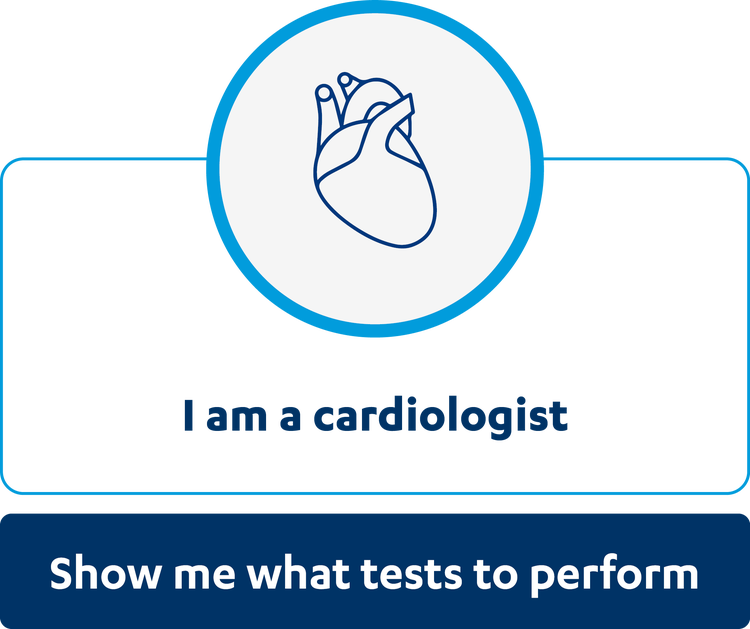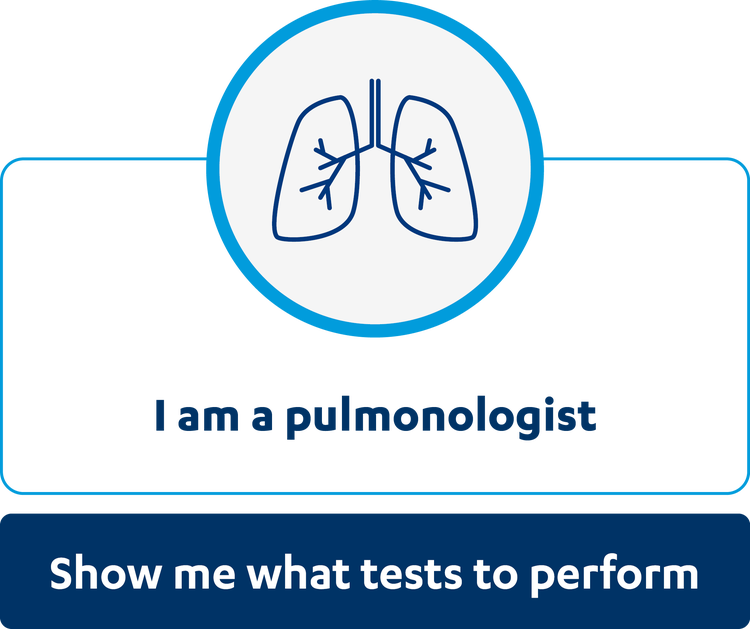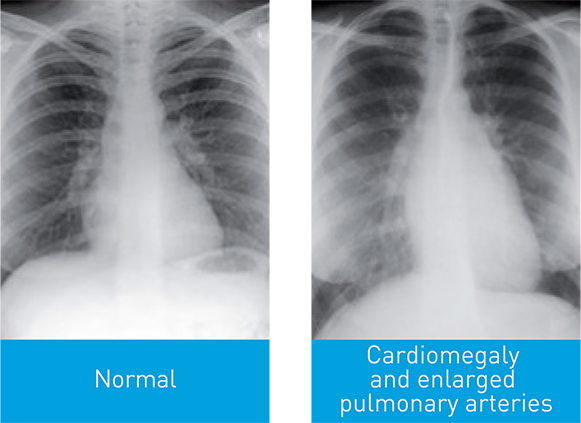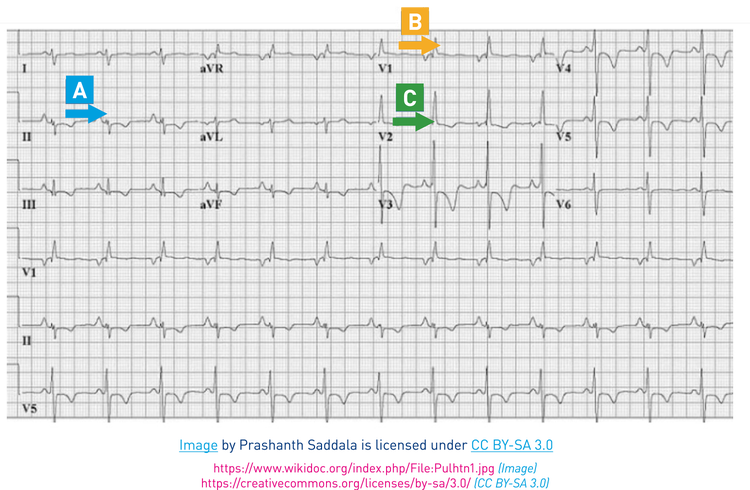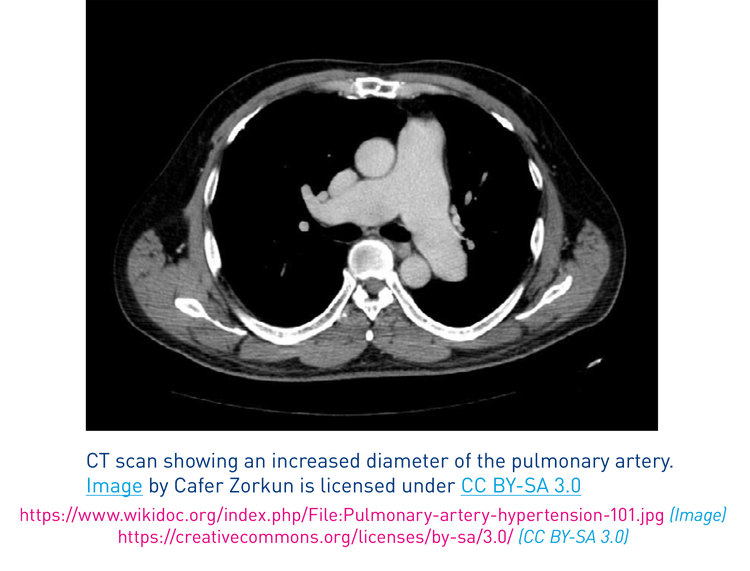Diagnosis of PAH

How to diagnose PAH
Early diagnosis of PAH and timely therapeutic intervention is associated with improved patient outcomes. However, early diagnosis of PAH is often challenging due to the non-specific nature of early symptoms, among other factors.4 See below for detailed guidance on the diagnostic process for PAH.5
2022 ESC/ERS diagnostic algorithm
PAH should be considered in the differential diagnosis of patients presenting with a constellation of symptoms, including exertional dyspnoea, syncope, angina and/or progressive limitation of exercise capacity. This is of particular concern in patients without apparent risk factors or symptoms/signs of common cardiovascular and respiratory disorders.3
Special awareness should be directed towards patients with associated conditions and/or risk factors for the development of PAH, including:3

When PAH is suspected, clinical history, symptoms, signs, electrocardiogram (ECG), chest radiograph, echocardiogram, PFTs, CT of the chest and a V/Q scan are all required in order to exclude diagnosis of left heart disease, lung disease or chronic thromboembolic pulmonary hypertension (CTEPH). To confirm diagnosis of PAH, referral to a PH specialist centre for Right Heart Catheterization is required.3
See below the algorithm from the 2022 ESC/ERS clinical guidelines for the diagnosis and treatment of PH.3
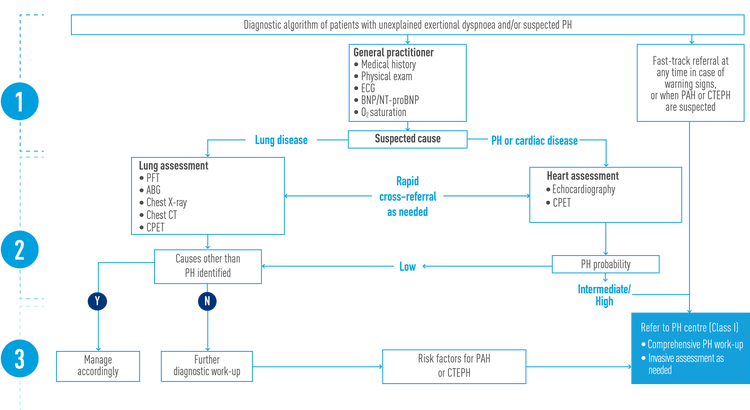

Echocardiography
Echocardiography has become the first-line diagnostic and screening tool for PH.3,4,6 A comprehensive echocardiogram that looks at the right heart as well as the left should always be performed as part of a patient’s work-up, as it can provide evidence raising the suspicion of PH and build a case for definitive diagnosis at a PH center that performs right heart catheterisation.3
Echo allows you to check for increased pressure in the right ventricle (RV) and/or RV dysfunction (always present with PH). Additionally, it can provide clues about the underlying cause of PH in case of left heart disease (LHD) and congenital heart disease (CHD).3
Echocardiographic probability of PH in symptomatic patients with a suspicion of PH
To have a good idea of the nature of the PH and the state of the RV, a comprehensive echocardiographic evaluation is required. This is done by means of estimating the systolic pulmonary arterial pressure (sPAP) through maximum tricuspid regurgitation velocity (TRV), as well as looking for other signs of PH.
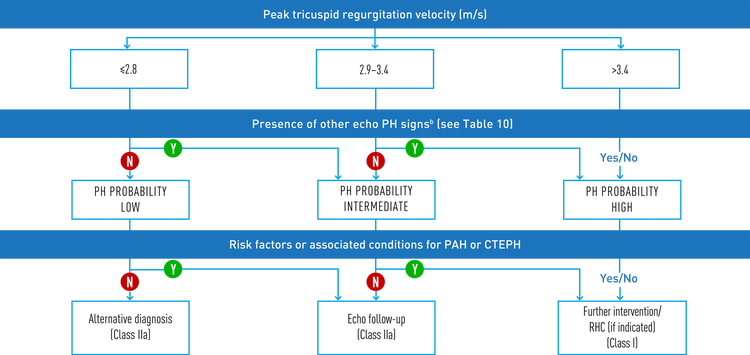
Adapted from Humbert et al. 2022
Other echocardiographic signs of PH
Echocardiographic signs from at least two different categories (A/B/C) from the list should be present to alter the level of echocardiographic probability of PH.
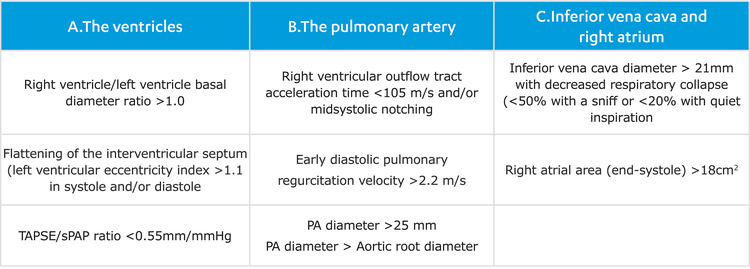
Adapted from Humbert et al. 2022
Visualization
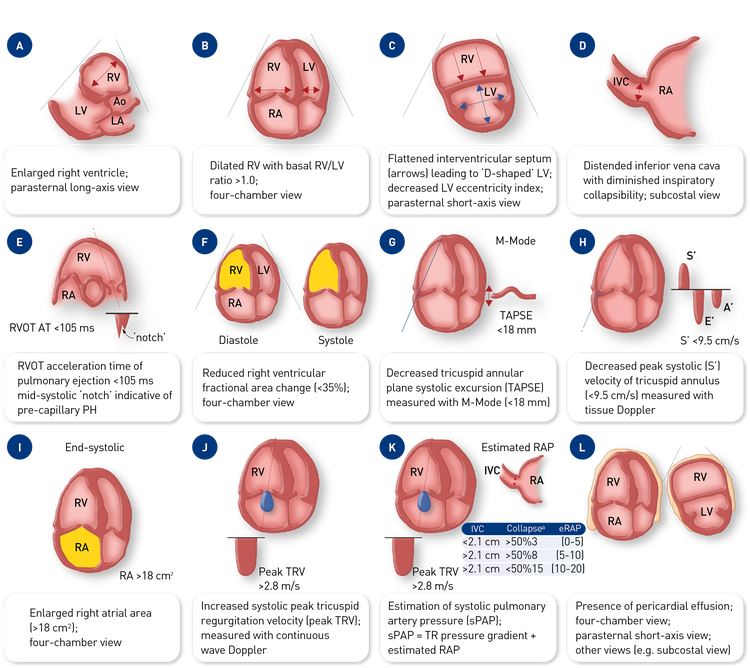
Adapted from Humbert et al. 2022
Next steps when echocardiogram raises a high or intermediate probability of PH
PH is seen in many clinical conditions and is classifed into groups based on its cause.3 Treatment strategy differs between groups, so it is important to consider what might be causing PH in a patient.
PH is a common complication of underlying left heart disease and chronic lung disease.7,8 Before referring a patient with high or intermediate probability of PH for assessment at a PH centre, consider conducting tests to check for left heart disease or chronic lung disease.3,4 If identified, treatment of the underlying disease is the recommended approach to manage PH complications.4,7 If left heart or lung disease is not present, or if suitable tests cannot be performed, refer the patient to a PH expert centre for diagnosis.3
Other tests for cardiologists
There are several other key investigations you can perform to raise suspicion of PH and help identify and classify its cause. Note that right heart catheterisation (RHC) is required to confirm a diagnosis of PAH, and should be performed by a PH centre.3
Click HERE to see where to refer your patients to a PH centre in Belgium.
Chest X-RAY3
ECG3
Blood values3
Arterial blood gases3
CPET3
Right heart catheterisation
See HERE the pulmonary investigations which should be performed for diagnosing PH.
Pulmonary function testing3
- Although diffusion capacity can be normal in PH, most patients have decreased diffusing capacity of the lung for carbon monoxide (DLCO)
- Normal spirometry and lung volumes (or mild restriction) with reduced DLCO (40–80% predicted) is indicative of PAH
- Decreased lung volume together with a decrease in DLCO may indicate interstitial lung disease
- CT scans should be used to assess severity of emphysema or interstitial lung disease
- COPD as a cause of hypoxic PH can be diagnosed on evidence of irreversible airflow obstruction, together with increased residual volumes and reduced DLCO or increased CO2 tension
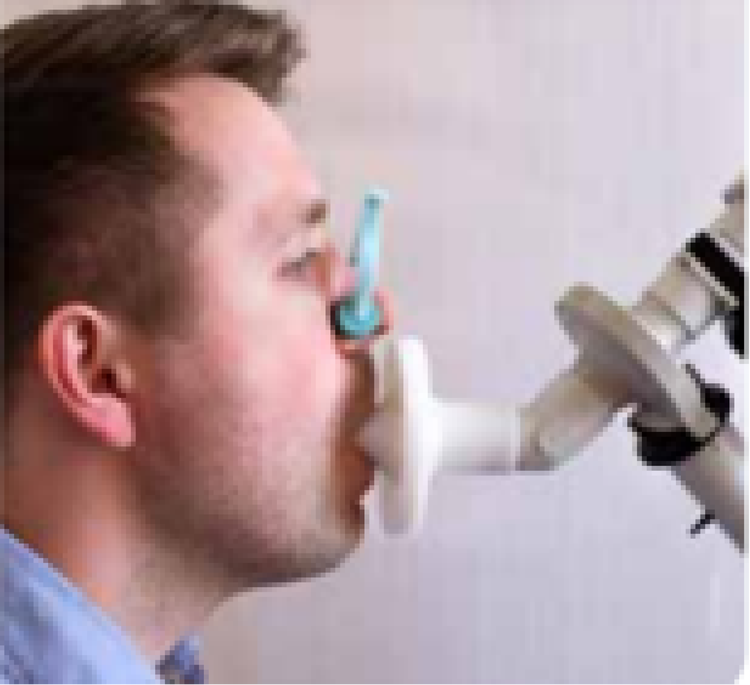
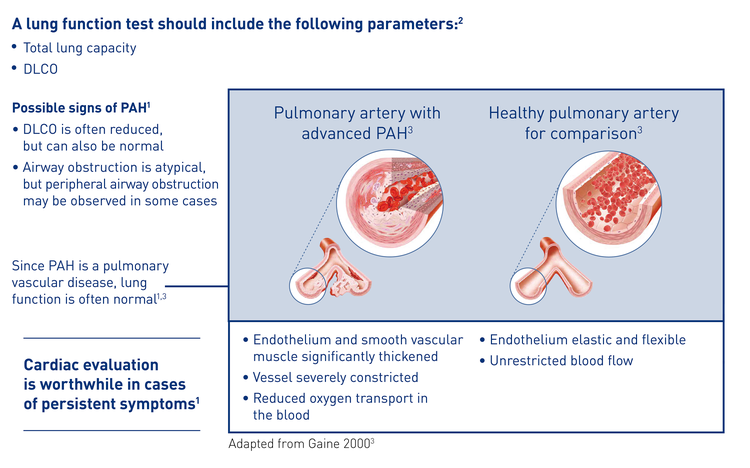
Other tests for pulmonologists
Chest X-RAY3
CT Scan3
Blood values3
Arterial blood gases3
CPET3
See HERE the pulmonary investigations which should be performed for diagnosing PH.
Continue reading

Patients with suspected PAH should be referred to a PH Center for further investigation and treatment.

Get access to diagnostic tools and educational aids to help you identify, assess and manage your PAH patients.

Would you like to know more about the screening and management of pulmonary arterial hypertension? Book an appointment with a product specialist by clicking the button below.
Do you have a question for us or did you not find what you were looking for? Let us know and one of our Johnson & Johnson's specialists will contact you as soon as possible.
Discover here the Johnson & Johnson's portfolio and product SmPC's.
On this page you will find interactive 3D animations of the human anatomy and various syndromes. This allows you to zoom in on the anatomy, tissue structures, disease mechanisms and the course of the disease.
References
- Khou V et al. Respirology 2020;25(8):863–71.
- Gaine S. JAMA 2000; 284:3160–3168.
- Humbert M. et al. Eur Respir J. 2022 Aug 30:2200879.
- Frost A et al. Eur J Resp J 2019;53:1801904.
- Simonneau G et al. Eur Respir J 2019;53:1801913.
- Vachiery J-L et al. Eur Respir J 2019; 53: 1801897.
- Nathan SD et al. Eur Respir J 2019; 53: 1801914.
- Bossone E et al. J Am Soc Echocardiogr 2013;26(1):1–14.
- Humbert M et al. Eur Respir Rev 2012; 21:306–312.
- Lau EM et al., Nat Rev Cardiol. 2015 Mar; 12(3): p.143-55.
- Brown et al., CHEST. 2011; 140(1): p.19-26.
- D’Alonzo et al., Ann Internal Med. 1991; 115: p.343-9.
